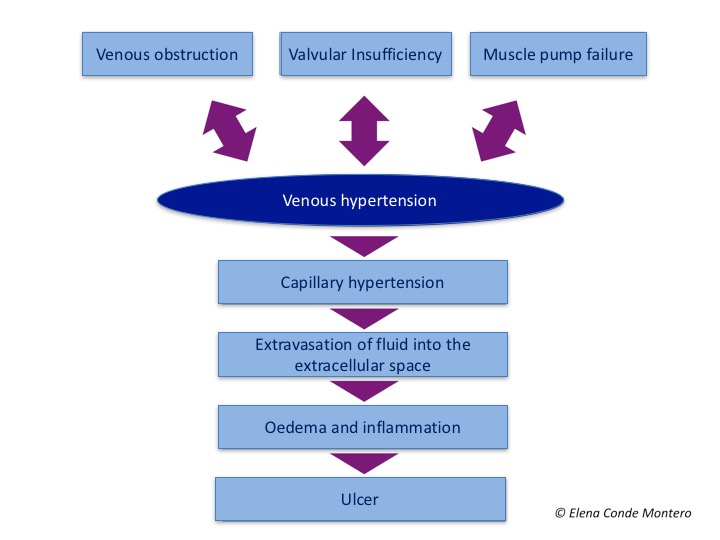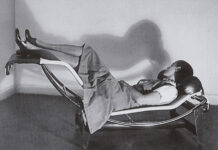How little is said about the importance of footfall and footwear in people with venous ulcers! In this post we will understand why it is important to raise awareness of their relevance.
As we saw in the post, “Chronic venous insufficiency from a dermatological perspective” , the failure of the muscular pump is one of the triggers of venous hypertension, which is the cause of all the skin alterations framed in chronic venous insufficiency.

In addition to calf muscle activation, the plantar pump is essential to reduce ambulatory venous hypertension and thus promote venous ulcer healing.
There is increasing awareness of the need for optimal therapeutic compression, to increase the effectiveness of calf muscle contraction, but we do not give enough importance to footwear and effective stride to activate the plantar pump.
Although there are few studies on the subject, those that have been published suggest that alterations in foot statics may be an important, but underestimated, risk factor for chronic venous disease.
Anatomical studies of the foot pump indicate that the venous reservoir is located in the lateral plantar veins. When the sole of the foot presses against the ground, the lateral plantar veins empty and blood return is promoted by the posterior tibial veins and the internal saphenous system via the medial perforators of the foot. Therefore, the presence of alterations in foot statics could be a good explanation for impaired venous return during ambulation.1 In addition, inadequate footing leads to postural changes that may reduce the efficacy of the calf muscle pump.
In a retrospective study of 412 patients (824 feet), seen by the same phlebologist, disorders in foot statics were recorded. 62.2% were women and 59.3% had a CEAP classification of C3 or higher. Thirty-one per cent had some foot statics disorder (16.6% pes cavus and 14.5% flat feet), but from C2 onwards the prevalence rose to 38%. A statistically significant association was found between the severity of venous disease and the presence of these alterations .2
Another prospective study of 24 patients with symptomatic chronic venous disease and impaired foot statics (mostly women with pes cavus), shows how correction of foot motion impairment with an insole can have comparable effects to a therapeutic compression stocking (18 mmHg) on quality of life and symptoms. In fact, the authors suggest that many symptoms of patients with varicose veins (pain, heaviness, cramps) probably do not have a venous origin, but rather postural alterations secondary to abnormalities in the footprint. They therefore recommend a biomechanical assessment of the foot in all patients with chronic venous disease and, if necessary, the use of insoles associated with compression therapy to optimise the efficiency of the veno-muscular pumps from the foot to the hip during gait and, therefore, improve postural problems and combat venous hypertension.3
On the other hand, if it is so clear that venous return begins at the sole of the foot and the proper functioning of this pump is key, why do patients continue to leave the clinic with a shoe that does not fit the bandage, that displaces it or that does not allow them to walk normally?

Taking all this into account, especially the frequency of alterations in the gait of these patients and their potential impact, the practical recommendations for people with venous ulcers should be as follows:
- As long as bandages are used, shoes should be wide, with a fastening that adapts to the foot, providing comfort and stability during walking.
- To prevent recurrence, in addition to a compression stocking, it will be important to use a suitable shoe and a biomechanical study of the foot carried out by a podiatrist in case an insole is necessary.
A subject that needs, without a doubt, more studies …I would love podiatrists to share their opinion and experience on this subject!:)
References:
- Uhl J-F, Gillot C. The foot venous pump. Anatomy and physiology. Phlebolymphology 2010;17:151– 8
- Uhl JF, Chahim M, Allaert FA. Static foot disorders: a major risk factor for chronic venous disease? Phlebology. 2012 Feb;27(1):13-8.
- Uhl JF, Chahim M, Allaert FA. Compression versus inner sole for venous patients with foot static disorders: a prospective trial comparing symptoms and quality of life. Phlebology. 2015 Feb;30(1):32-8.
Also available in: Español (Spanish)






